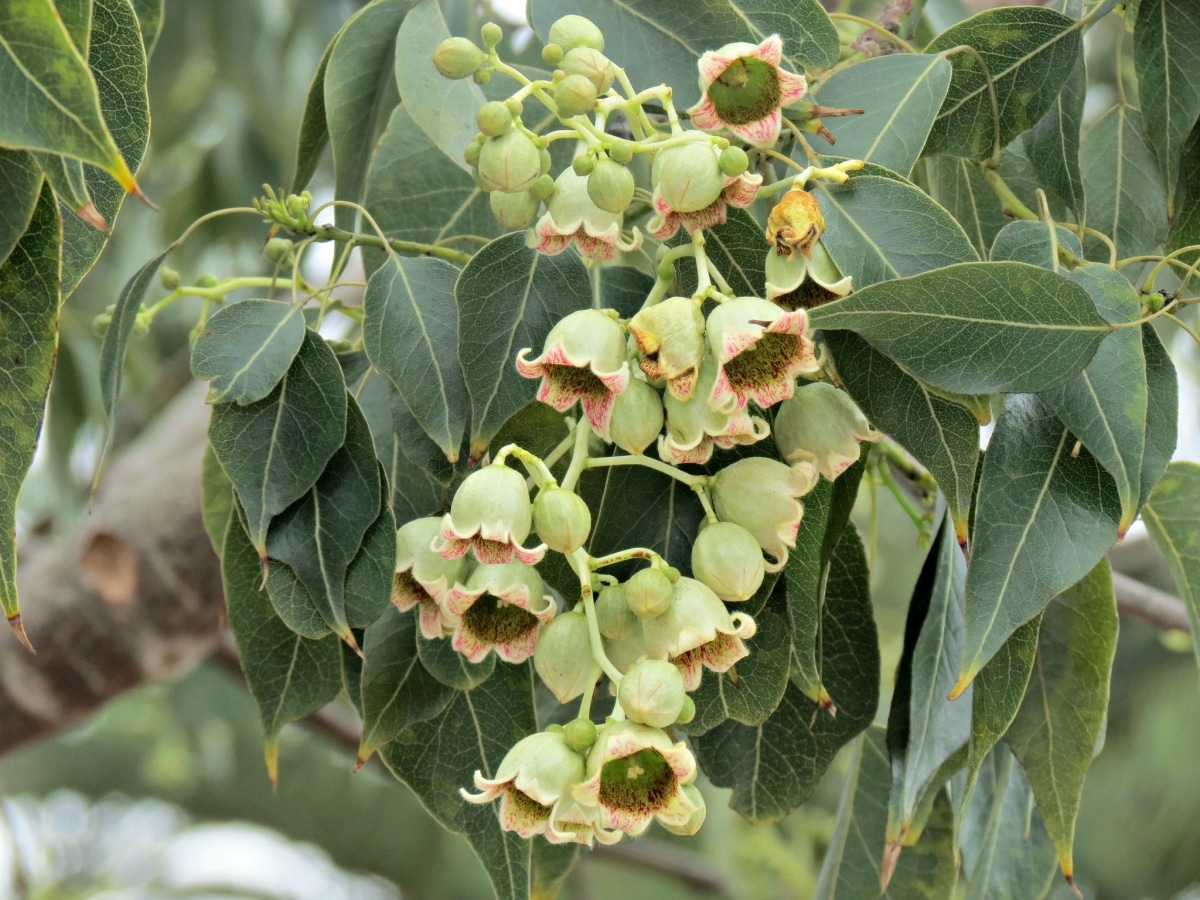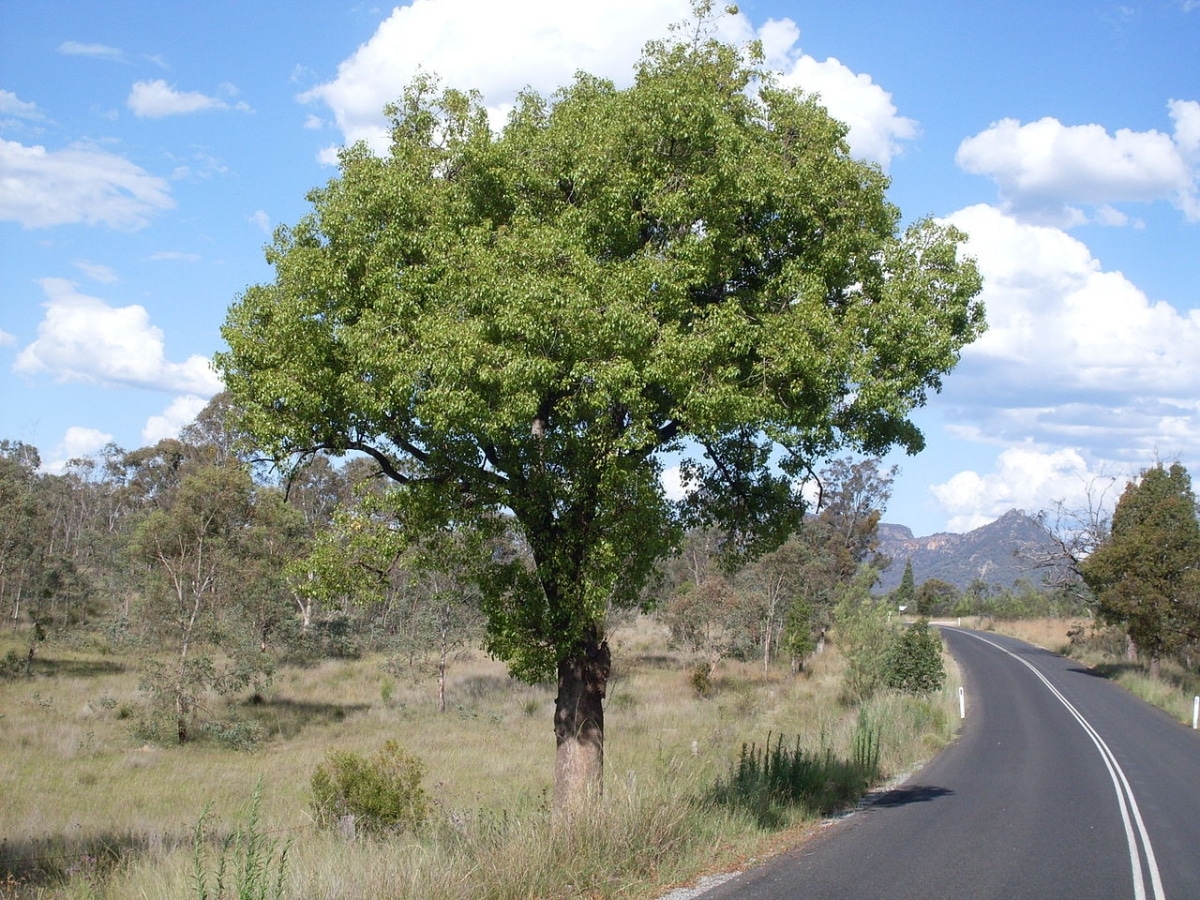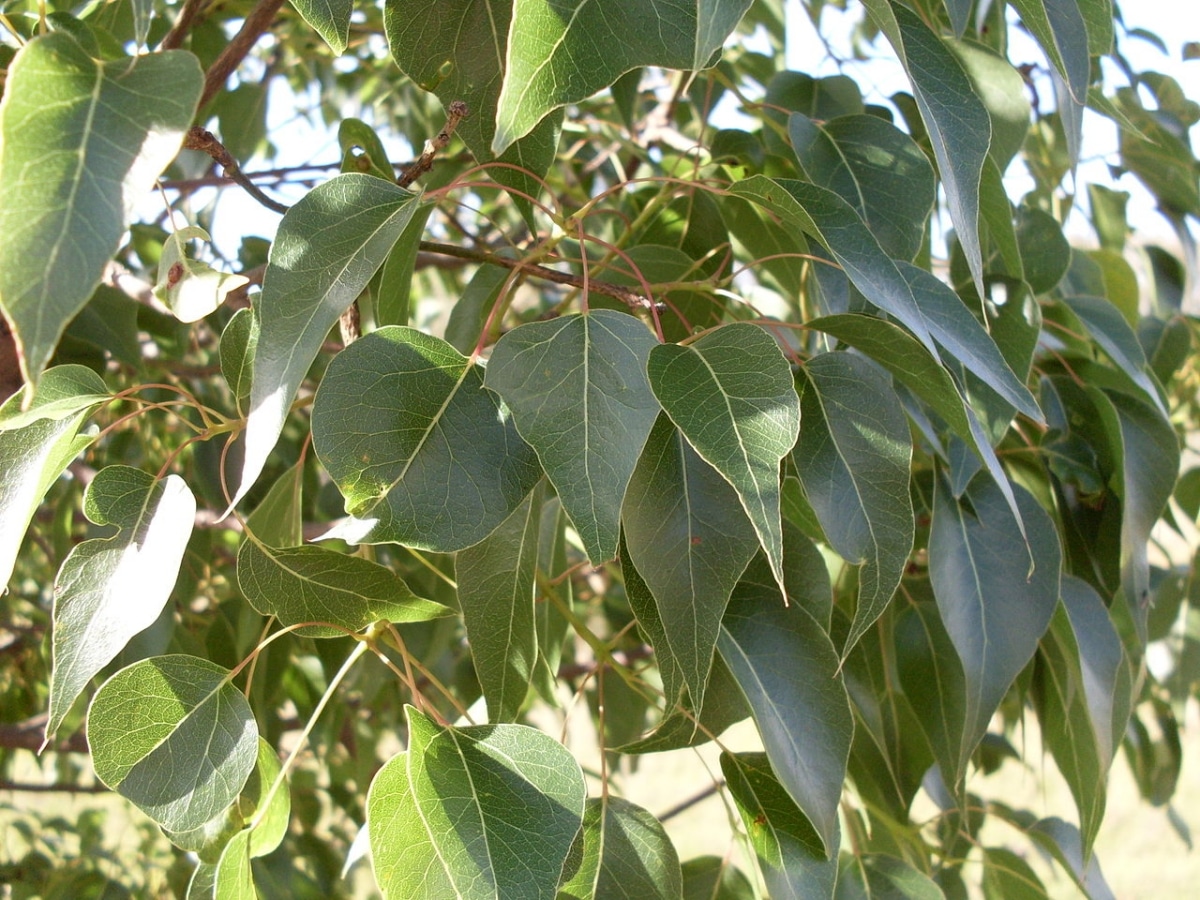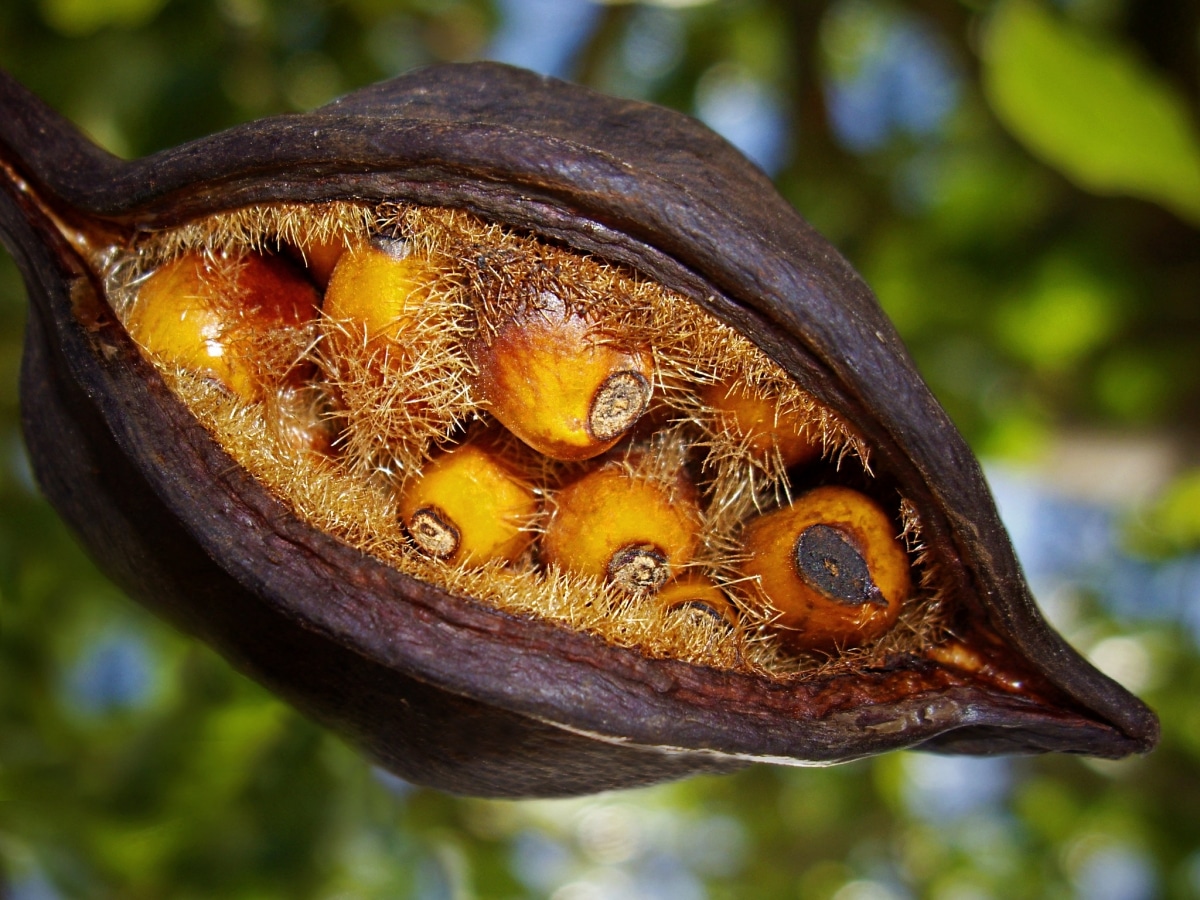
Image – Flickr/Linda DeVolder
Does it rain little where you live? Are there intense heat waves? So let me tell you that one of the hardiest tree species out there is the Brachychiton populneus. It withstands almost everything: drought, temperatures up to 40ºC, and can even withstand short-term frost without damage.
In addition to all these qualities, it must also be said that its growth rate is very fast. In fact, it can grow up to 1 meter per year if given the chance.
Features Brachychiton populneus

Image - Wikimedia / John Tann
It is a semi-evergreen tree (or semi-deciduous, it is the same) native to Australia, where it is called kurrajong. In Spain we call it braquiquito or bottle tree, referring to the shape that the trunk acquires. It grows up to 12 meters high, and develops a rounded crown made up of simple or pointed leaves, with or without lobes.; Sometimes it is even the case that the same specimen has several types of leaves. In winter it partially loses its foliage.
His trunk is straight, so much so that it almost looks like a pillar or column, and once an adult it has a diameter of about 30-40 centimeters. In addition, it develops a very strong main root, which is what keeps the tree anchored to the ground; it is also from which it springs should it die young.
Blooms early. One of mine did it when he was 3 years old, although it is true that he had few flowers that time. Normally, as he gains height and strength, an increasing number of flowers sprout from his cup. By the way, these are flared, whitish-green on the outside and reddish on the inside.
The fruit is a capsule about 3-4 centimeters long, containing numerous yellow seeds.
What is?
In Spain it is only used as an ornamental plant. It resists drought very well, so it is a very interesting species to plant in places where it rains little, such as in the Mediterranean region. It is a tree that provides shade, which is why it is sometimes planted on sidewalks, paths or paths.
However I do not recommend having it as a hedge, as the trunk branches several meters from the ground, and for it to be useful as such, the specimens would have to be placed about 50 centimeters away from each other, something that would cause them many problems due to the lack of space and the fight for nutrients.
Now, if we go to Australia, we must know that the aborigines do give it other uses. One of them is edible: the seeds are roasted and then can be eaten. Also, the leaves serve as food for livestock, and the wood is also useful for making shields.
What are the care that must be given?
They are very few, and easy. It hardly requires any type of maintenance (what's more, if it is on the ground, it is practically nil). But it is interesting to know its needs, since in this way we will know where to put it, or how often to water it, among other things.
Location

Image - Wikimedia / John Tann
El Brachychiton populneus is a plant that grows in direct sunlight. Thanks to it, it can carry out photosynthesis normally, something that improves its health and allows it to have a straight and strong trunk.
It is not considered an invasive tree, but you should bear in mind that, as we said at the beginning, it regrows from the root whenever it is young.
Can it be grown in a pot?
For a couple of years yeah, but it is preferable to plant it in the ground as soon as possible. It grows a lot, and what better than giving it the opportunity to do so freely since it is young. This way you will get a good size specimen in a short time.
Earth
- Garden: not demanding. It tolerates degraded, alkaline soils, those that tend to flood. It is a plant that can be grown in almost any type of soil, except those that are always flooded, since its roots would not survive in an aquatic environment.
- Flower pot: if it is going to be in a pot, use a universal substrate (on sale here).
Irrigation
Very scarce. If it is in a pot, it will be watered once a week, or two at most. But if it is planted in the garden, an occasional watering in summer will do.
If a minimum of 300l of rainwater falls in your area per year, and as long as the Brachychiton populneus been in the ground for more than a year, you can stop watering it.
Subscriber
You can pay, but you don't need it. If you want, you can add worm humus (for sale here) or other type of organic fertilizer in spring and summer, but it is not vital for it unless it is in eroded soil and/or with few nutrients.
Plantation
Spring is a good time to plant it in the ground or in a larger pot.
Multiplication

Image - Flickr / S BV
El Brachychiton populneus multiplies by seeds during spring; they can also be sown in autumn if there are no frosts or they are very weak.
Rusticity
Supports up to -4ºC. Of course, keep in mind that the colder it is, the more leaves it will lose.
What dou you think about him Brachychiton populneus?